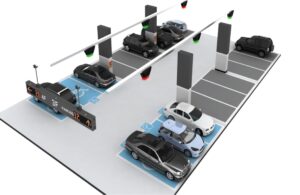Urban transportation is experiencing a quiet revolution. Electric scooters are no longer just a novelty. They have become essential mobility tools that allow city dwellers to move quickly and affordably through crowded streets. These compact vehicles are a part of a larger micromobility trend that addresses some of the greatest challenges modern cities face: traffic congestion and air pollution.
The emergence of e-scooters is more than a mere trend in transportation. It represents a fundamental change in the way people travel around cities, putting convenience, efficiency, and sustainability above traditional car-centric models.
E-Scooters are Transforming Urban Transport
Electric scooters have revolutionized urban transportation by filling in critical gaps left by existing transit systems. E-scooters are a point-to-point mode of transportation that can be tailored to meet individual needs. They are excellent at solving the “last-mile” problem, that frustrating distance between transit stops and destinations. This aspect often forces people to drive or walk long distances.
E-scooter use has exploded in cities around the world. Shared scooter programs are now available in hundreds of cities, providing these devices at no upfront cost. Smartphone apps allow users to locate, unlock, and ride scooters, creating an experience that is comparable to traditional modes of transportation. E-scooters are particularly popular with commuters, tourists, and anyone who needs to make quick trips around town.
Micro-Mobility Options and Their Appeal
Micro-mobility is a term that encompasses various lightweight electric vehicles, usually designed for short trips. This category also includes electric bikes and skateboards as well as electric unicycles. They all have different advantages, depending on the user and context. But they share some common features: they are faster than walking and more flexible than public transport, as well as more environmentally friendly than automobiles.
Micro-mobility is appealing because of its simplicity and efficiency. The infrastructure required for these vehicles is minimal compared to other transportation systems. These vehicles can navigate bicycle lanes, pedestrian zones, and some sidewalks. They are ideal for urban environments with limited space. The users appreciate not having to wait for buses or deal with parking issues.
City Dwellers Can Enjoy the Benefits of E-scooters
The popularity of e-scooters is due to their many practical advantages. For short and medium distances they are significantly faster than walking, with speeds typically between 15 and 20 mph. They are ideal for short trips of up to five miles, which is often too long to comfortably walk but not enough to warrant driving.
Another major attraction is cost-effectiveness. The cost of shared e-scooter trips is usually lower than taxis or ride-sharing services, which makes them more accessible to many users. Regular commuters can save a lot of money compared to the cost of car ownership or public transit passes. The convenience factor cannot be overstated—e-scooters are available on demand, don’t require parking in traditional spots, and can often be left near destinations rather than in designated areas.
Infrastructure Supporting Micro-Mobility
Infrastructure planning is essential for a successful integration of e-scooters. The streets of cities are being redesigned to make room for these new vehicles. The dedicated bike lanes are designed to serve two purposes: they provide safe pathways for both scooter and cyclist riders. To address pedestrian accessibility and sidewalk clutter, some cities have created specific e-scooter zones.
Another important element is the charging infrastructure. Many companies that offer shared scooters employ fleets to collect, charge, and distribute them in service areas. Some cities are looking at fixed charging stations to reduce the logistical burden and ensure scooters are available when needed. Micro-mobility data is also being incorporated into traffic management systems to help cities improve traffic flow and identify popular routes that could benefit from better infrastructure.
Sustainability and Environmental Impact
By reducing the reliance on gasoline-powered vehicles, e-scooters help achieve urban sustainability goals. Every scooter trip that replaces an automobile journey reduces traffic and eliminates emissions. Even after accounting for the cost of manufacturing and charging from the grid, studies indicate that e-scooters emit significantly fewer emissions per mile compared to cars.
Environmental benefits go beyond direct reductions in emissions. E-scooters are a convenient alternative to driving a car. Such devices can reduce the number of parking spaces in cities, which allows them to use valuable land for housing, parks, or other productive purposes. E-scooters complement public transport systems by making it easy for people to travel to transit stops. These improvements could increase overall use of public transportation.
E-Scooters and the Future of Cities
With improvements in battery technology and durability, the e-scooter market continues to evolve rapidly. Future models will have longer ranges and quicker charging times, as well as better integration with smart-city systems. Some manufacturers have developed swappable batteries that can eliminate the need to collect and redistribute vehicles.
As cities gain more experience with micromobility, regulatory frameworks also mature. Many municipalities have implemented licensing systems, safety standards, and operational guidelines that balance innovation and public safety concerns. Integration of e-scooters into existing transportation networks is likely to deepen. Standard features include unified payment systems, coordinated routing, and a standardized licensing system.
The Micro-Mobility is Here to Stay
Urban transport ecosystems have proven the value of e-scooters and other micromobility solutions. These vehicles meet real mobility requirements while also supporting the sustainability and livability objectives that cities around the world are striving for. These vehicles will be more and more integrated into daily urban life as technology advances and infrastructure changes.
Micro-mobility’s success ultimately depends on the continued collaboration of technology companies, city planners, and communities. Working together to tackle challenges such as safety, integration, and accessibility, cities can leverage the full potential of e-scooters to create a more efficient and sustainable urban environment.
FAQs
1. Are e-scooters a safe way to travel in the city?
Safety of e-scooters is largely dependent on the infrastructure and riding behavior. Cities with clearly defined bike lanes and traffic rules tend to have better safety records. Helmets are a must for all riders. They should also follow traffic laws and be aware of their surroundings.
2. What is the average cost of e-scooter trips?
Shared e-scooter services charge an unlock fee ($1-2), plus a rate per minute ($0.15-0.50). The average cost of a 10-minute ride is between $2 and $7. This figure makes them competitive with other options for short-distance transport.
3. What happens to electric scooters when the batteries run out?
Many companies that rent out scooters have teams who collect and recharge scooters with low batteries. Many newer systems utilize swappable batteries and solar charging stations to extend the life of scooters.
4. Are e-scooters suitable for all weather conditions?
The best conditions for e-scooters are dry. For safety, most shared services stop operations in the rain, snow, or other extreme weather conditions. E-scooters should not be used on wet or slippery surfaces.
5. How do cities regulate e-scooter programs?
The regulations of each city are different, but they usually address issues such as operating permits, vehicle sizes, parking requirements, and safety standards. Many cities require operators to share usage data with other neighborhoods and maintain minimum service standards.




